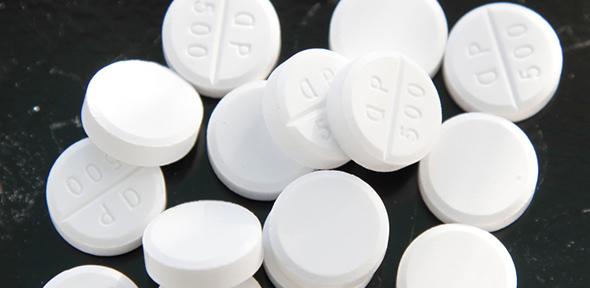
A new approach to mapping and predicting the impact of chemical compounds in the body, which it is hoped could eventually reduce the need for toxicity tests in animals, has been trialed by scientists.
Although still at an early stage, the process involves identifying “molecular initiating events” (MIEs) - the term given to the moment at which a molecule that has entered the body starts to interact with it, kick-starting a sequence of events which leads to a toxic outcome.
By identifying the specific features and properties within individual molecules that cause these events, the researchers argue that it should be possible to make accurate predictions about the effects of new and untested chemical compounds with similar characteristics.
In principle, that would reduce the need to test some chemicals contained within drugs, pesticides, food additives or other consumer products on animals. Instead, scientists would be able to screen a chemical’s molecular structure using customised computer software - a transition they characterise as one from testing “in vivo” (within the living) to “in silico” (on computers).
To prove the point, the new research, reported in the journal Chemical Research in Toxicology, mapped the pathways by which several well-known compounds, such as paracetamol, cause toxic outcomes. By tracing these back to the molecular initiating event, the team were able to identify chemical characteristics, that were present in other molecules exhibiting the same toxicities.
Tim Allen, a PhD researcher in chemistry at St John’s College, University of Cambridge, and the paper’s first author, said: “We are at the very early stages of building predictive tools for different molecules, and this work provides a proof-of-concept foundation for doing much more.”
“At the moment, there is sometimes no alternative to testing some new chemicals on animals to establish whether or not they are going to be safe for human use. Computer modelling is now finally starting to catch up. Eventually, if we can map the adverse outcome pathways of numerous molecules in the way that we have here, we will be able to develop models which mean you don’t have to administer products in vivo and then look for a reaction to establish whether or not they are safe.”
Ultimately, the researchers hope to develop a complete “MIE Atlas”, capturing data about a large number of molecules and their interactions with the body. Existing scientific knowledge of molecular initiating events is patchy and far from complete.
An initiating event can take on a number of forms. For example, a molecule from an ingested drug may bind to a certain protein within an organ, leading to a series of adverse effects. Equally, it may inhibit the production of a specific enzyme that the body would normally produce.
What each event has in common is that a link is established between a certain characteristic feature of the molecule in question - such as its size, shape, or acidity level - and a feature of human biology. “In many ways it represents the boundary between chemistry and biology,” Allen said. “If we can understand the chemistry of existing molecules and how they interact with the body, then we will be able to make predictions about new products and their likely toxicity based on similar characteristics.”
To test the theory, the Cambridge research team examined the pathway by which acetaminophen - better known as paracetamol - causes acute liver failure as a result of an overdose. From a survey of existing scientific literature on this subject, they were able to extrapolate the initiating event, its molecular basis, and accurately identify the likely toxicity of other molecules with a similar characteristic.
The molecular initiating event which leads to paracetamol becoming toxic is an oxidation process which happens when it enters the liver. This produces a toxic molecule called NAPQI, which is normally detoxified relatively quickly. When a person overdoses, however, too much NAPQI is produced, and this reduces the body’s normal defences and can ultimately result in liver failure.
The study identified that the key to this oxidation process is a feature of a paracetamol molecule’s structure known as the “para-aminophenol” fragment, a feature at the centre of the molecule without which this toxicity would not be observed.
Having established this, the researchers looked for similar structures in other substances, to see if they resulted in the same toxicity. The hypothesis proved to be correct in two cases - the compound Phenacetin, a now disused pain relief drug, and Amodiaquine, an anti-malarial agent. Both compounds had the same fragment within their structure, and because of this, both had the same toxic implications for the body when taken in certain quantities.
The research paper also speculates that better knowledge of Molecular Initiating Events could enable scientists to predict not only adverse, but also positive, outcomes which may emanate from the uptake of certain chemical compounds into the human body. The aim of the work, however, is firmly based in toxicology – to build on current in silico approaches, and increase understanding of what goes on during a toxic response.
“The approach seems strong and well-rooted in theory, and the aim of this paper is really to gain more feedback on the merits of widening out this type of research,” Allen said. “What we have done so far represents a tiny fraction of toxicological and chemical space. Further work will allow our approach to become a much more widely-used and valuable tool for toxicologists.”
Scientists report a new method for establishing whether chemical compounds are safe for human use without "in vivo" testing, based on so-called "molecular initiating events" at the boundary between chemistry and biology.
The text in this work is licensed under a Creative Commons Licence. If you use this content on your site please link back to this page. For image rights, please see the credits associated with each individual image.
